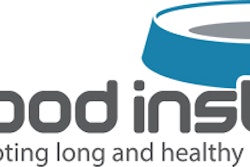The American Feed Industry Association (AFIA) in partnership with the USPOULTRY Poultry Protein and Fat Council held its Pet Food Conference at the International Production & Processing Expo (IPPE) in Atlanta on January 28. During the morning session, the Food Safety Modernization Act (FSMA) took center stage. An expert panel featuring Jodi Miller, regulatory manager, P&G Pet Care; Steve Taylor, director of regulatory affairs-US/Canada, Hills Pet Food; and Bart Dunsford, Key Product Development/Technical Services, Animal Science Products, tackled the main issues of interest to the producers of animal food.
The final proposed rule was published in October 2013; however, AFIA, National Grain & Feed Association (NGFA), Pet Food Institute (PFI) and National Rendering Association (NRA) asked for and were granted an extension, which pushed the date for submission of final comments to March 31, 2014.
"AFIA's goal is to clarify to determine what the comments need to be-what the proposed rule means-and collect feedback about how it will impact the industry," says Leah Wilkinson, AFIA director of ingredients, petfood and state affairs. "This goes for what works as well as what doesn't work."
Ingredients, co-products, petfood and livestock feed are included under the "animal food" rule, which were based on human food current good manufacturing practices (cGMPs).
"The question is whether or not the [human food rule] was an appropriate start," Miller says. "I don't think it was. The animal food industry is a diverse industry with a multitude of processes and facilities. The language is too prescriptive and broadened to greater degree than it historically had been."
Taylor adds: "Diversity makes [the proposed animal feed rule] onerous."
The panel agreed that the cGMPs should apply to all animal groups because it is the overall industry's responsibility to produce safe animal food-whether for livestock or for pets-and separate rules or exemptions would cause confusion.
"How can an ingredient supplier have one set of cGMPs for feed and another for pet food companies?" Taylor asked. "How are human food manufacturers going to handle this when it comes to supplying their co-products to animal food or pet food? It should be an even rule."
The panel highlighted several new guidelines and definitions under the proposed rule for animal food:
- Personal hygiene: Employees should wash their hands; sick employees cannot handle feed/pet food; and maintain adequate cleanliness.
- Hazard analysis: Includes identification of hazards that may occur naturally or unintentionally introduced.
- Chemical hazards: Such forms of chemical hazards include pesticides, drug residues, natural toxins, decomposition, unapproved food additives and nutrient imbalances. Nutrient imbalances should be defined as nutrient toxicity and deficiency because prescribed diets may purposely be imbalanced. In addition, several co-product ingredients could be considered a chemical hazard. The group feels these distinctions will be addressed during the comments period.
- Training: Qualified individuals can obtain training "via courses with standardized curriculum or through on-the-job experience to develop and apply a food safety system." The panel suggests keeping employee training records on hand should the company be called to present them.
- Food safety plans: The proposed rule requires inclusion of hazard analysis, recall plan, corrective action procedures, preventive controls, procedures and frequency of monitoring process control systems, and verification procedures as part of a food safety plan.
- Supplier verification: The panel feels further clarification is needed in terms of when it is appropriate to require them to carry out the rule requirement and who it should apply to. For example, does it apply to all facilities that manufacture, process, pack or hold animal food, or just to those that manufacture or process it?
Under a court order, the final rules must be issued on June 30, 2015. Compliance dates will vary depending on the size of the organization. The rule will go into effect 60 days post-publication.
















